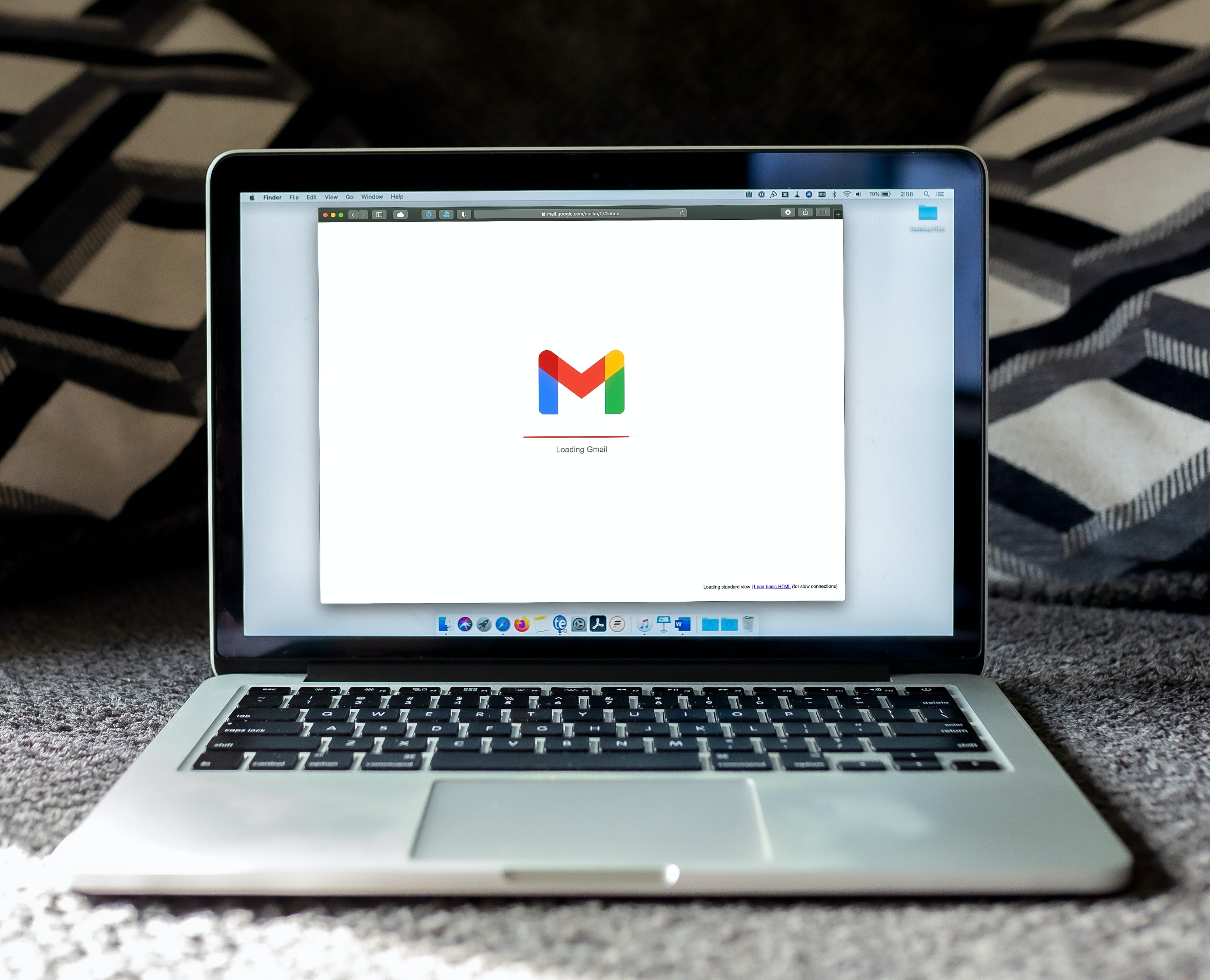Beyond My Lens: Photographer Katie Levine’s Storytelling Podcast, Supported by Narrative
Blog
By Alex Souchoroukof
As a photographer, you have a unique talent that allows you to capture life's most precious moments through your camera's lens. But in today's competitive market, more than simply having a great portfolio is needed to attract new clients and grow your business. That's where email marketing comes in.
Imagine this: you've just finished a stunning photoshoot for a family's newborn baby. The parents are thrilled with the results; you've built a strong connection with them during the shoot. But how do you keep that connection and turn them into repeat customers?
Email marketing provides a powerful solution. By sending targeted, personalized emails to your clients, you can keep them engaged and informed about your services, special offers, and upcoming events.
With email marketing, you can showcase your unique style and personality and build a deeper connection with your audience. You can position yourself as an expert in your field by sharing valuable tips and behind-the-scenes of your work.
And with the right strategies in place, you can turn those email subscribers into loyal customers who keep coming back to you for all their photography needs. So if you're looking to take your photography personal brand to the next level, start paying attention to the power of email marketing.
This article will explore essential strategies for leveraging email marketing to attract new leads, nurture relationships with your clients, and drive more sales. Let's dive in!

To successfully leverage email marketing as a photographer, you must first build a targeted email list. Think about the people interested in your services and how you can get their contact information.
Here are some insights to help you get started:
A lead magnet is essentially an incentive or a free resource you offer your potential clients in exchange for their contact information, usually their email addresses. The purpose of the lead magnet is to attract and capture the attention of your target audience and encourage them to share their contact information with you.
Offering a lead magnet relevant to your niche and providing value to your potential clients is an effective way to build your email list and generate leads. It can help you establish your authority in your niche and showcase your expertise to your potential clients.
For example, if you specialize in food photography, you could offer a free guide on "The Art of Food Photograph." Promote the lead magnet on your social media accounts and website, and include a sign-up form.

Attending events relevant to your photography niche is a great way to network and connect with potential clients. Wedding expos, camera shows, and similar events can be particularly useful for photographers.
At these events, you can showcase your work, offer promotions, and collect the contact information of potential clients. This can include their name, email address, phone number, and other relevant information.
Be sure to ask for permission before adding them to your email list, and provide an easy way for them to opt-out if they no longer wish to receive emails from you.
Once you have collected contact information, you can use an email newsletter software to keep in touch with potential clients and promote your services. This can include sending newsletters, showcasing your recent work, offering promotions, and providing useful tips and resources related to your photography niche.
Ensure your website has a clear sign-up form that visitors can use to opt-in to your email list. You could also offer a special discount or promotion to entice people to sign up.

Once you have a targeted email list, creating compelling content to keep your subscribers engaged is crucial. The goal is to provide value to your subscribers while showcasing your photography skills and expertise.
Here are some strategies for creating email content that resonates with your audience:
One of the most efficient ways to showcase your photography skills is to include photos in your emails. For example, if you specialize in portrait photography, you could create a "Photo of the Week" feature and highlight a different portrait photo each week. This will showcase your work and keep your subscribers engaged and excited to see what you'll feature next.
As a photographer, you have a wealth of knowledge and expertise to share with your subscribers. Consider including tips and tricks for getting the perfect shot or advice on preparing for a photoshoot. This type of content will provide value to your subscribers and position you as an expert in your field.
One of the benefits of having a targeted email list is that you can offer special deals and promotions to your subscribers. For example, you could offer a discount on a family photoshoot for subscribers who book within a specific time frame. This will drive sales and show your subscribers that you appreciate their support.
An effective call-to-action (CTA) is a critical component of any email marketing campaign. It's the part of your email that tells your subscribers what action you want them to take next. Without a clear and compelling CTA, your subscribers may not know what to do after reading your email, and your email marketing efforts may fall flat.
Using action-oriented language in your CTA can be a powerful way to encourage subscribers to take action. Instead of using passive language like "find out more," use more active language such as "book now" or "register today." This type of language can create a sense of excitement, motivating subscribers to act on your message.
Another effective strategy for creating a compelling CTA is to create a sense of urgency. You can use phrases such as "limited time offer" or "last chance" to create a sense of urgency and encourage subscribers to act quickly before they miss out.
It's also important to place your CTAs strategically throughout your email. Including a CTA at the beginning of your email can help grab your subscribers' attention and encourage them to keep reading. Including a CTA in the middle of your email can remind subscribers of your offer and encourage them to take action. And including a CTA at the end of your email can serve as a final reminder and encourage subscribers to take action before they close your email.
Personalization is a key aspect of effective email marketing. Addressing your subscribers by name is just the beginning. By segmenting your email list based on their interests and behaviors, you can send targeted, personalized emails that are more likely to resonate with your audience.
Segmentation allows you to divide your email list into smaller groups based on specific criteria. This could include demographics such as age, location, or gender, as well as interests, behaviors, or past purchases. You can increase engagement and conversion rates by creating targeted email campaigns tailored to each segment.
For example, if you specialize in travel photography, you could segment your email list to only include people who have shown an interest in outdoor activities. You could also segment based on specific destinations, such as beach or mountain locations. By sending targeted emails that showcase your photography in these different scenarios, you can capture your audience's attention and increase the likelihood of bookings or sales.
Segmentation also allows you to tailor your email content to specific customer journey stages. For example, subscribers who recently signed up for your email list may need more introductory content and education about your services. At the same time, those who have already made a purchase may be more interested in exclusive offers or upcoming promotions.

In today's digital age, more people use mobile devices to check their emails. This means that optimizing your emails for mobile is crucial. You want to make sure your emails are easily readable on smaller screens.
To ensure your emails are mobile-friendly, it's important to use a responsive design that automatically adjusts to the screen size. This means that regardless of whether your subscriber uses a desktop, laptop, tablet, or mobile phone, they can easily view and read your emails.
Additionally, previewing your emails on mobile devices is important to ensure they look good and are easy to read. This can help you identify any formatting or design issues that could cause problems for mobile users.
When creating your email, consider using a single-column layout. This makes it easier for readers to scroll through your content without zooming in or out. It also helps to use the right font and pay attention to the size to ensure readability on smaller screens.
Finally, ensure your images are properly formatted and optimized for mobile viewing.
Optimizing your emails for mobile devices ensures that your subscribers will have a positive experience when reading your content, regardless of the device they are using.
Having a targeted email list and compelling email content is not enough. You also need to ensure your emails reach your subscribers' inboxes.
One strategy for optimizing email deliverability is to use a reputable email service provider. These providers have established relationships with internet service providers (ISPs) and email clients, which can help ensure your emails are delivered to subscribers' inboxes.
Another strategy is to regularly clean your email list. By doing this, you can ensure that you only send emails to active and engaged subscribers. This can help improve your email deliverability and avoid being marked as spam.
A consistent "from" address can also help improve your email deliverability. This builds trust with your subscribers, as they can recognize the address associated with your brand, such as your business name or domain name.
To avoid being marked as spam, you should also avoid spam traps in your email content. These triggers can include using all caps in your subject line, using too many exclamation points, or using certain words and phrases commonly associated with spam.
Finally, monitoring your email metrics, such as open and click-through rates, can help you identify any deliverability issues and adjust as needed. For instance, if you have low open rates, you may need to change your subject lines or email content to better resonate with your audience.
In summary, optimizing your email deliverability ensures that your emails reach your subscribers' inboxes and drive engagement with your photography business.

One of the most significant benefits of email marketing is that it allows you to automate your communications with your subscribers. By setting up automated email campaigns, you can nurture leads and build relationships with your subscribers without sending emails manually.
Here are some examples of automated email campaigns that you can set up for your photography business:
A welcome series is a series of emails sent to new subscribers to introduce them to your brand and build trust with them. This is an excellent opportunity to highlight your best work and provide helpful tips and resources for your subscribers.
If you sell photography products or services on your website, you can set up abandoned cart emails to remind subscribers of items left in their cart and guide them to complete their purchases.
If subscribers last engaged with your emails a while ago, you can set up re-engagement campaigns to win them back. These campaigns can include special offers or personalized content or even referral incentives to encourage them to re-engage with your brand.
Sending personalized birthday emails to subscribers can be a great way to build relationships and show appreciation for their support. You can offer your subscribers special discounts or promotions as a birthday gift.
After a subscriber makes a purchase, you can set up post-purchase emails to thank them for their business and encourage them to leave a review or refer friends and family to your photography services.
By automating your email marketing, you can save time and resources while still nurturing leads and building relationships with your subscribers.

Measuring and analyzing your results regularly is important to ensure your email marketing efforts are effective. Here are some key metrics to track:
Your open rate is the percentage of subscribers who open your emails. A high open rate indicates that your subject lines are compelling and that your subscribers are interested in your content.
Your CTR is the percentage of subscribers who click on a link within your email. A high CTR indicates that your content is engaging and your subscribers are interested in learning more.
Your conversion rate is the percentage of subscribers who take a desired action, such as booking a photography session or purchasing a product, after clicking a link in your email. Tracking your conversion rate can help you determine the effectiveness of your email marketing campaigns in driving business results.
Your bounce rate is the percentage of undeliverable emails returned to you. A high bounce rate may indicate issues with your email list, such as outdated or invalid email addresses.
Your unsubscribe rate is the percentage of subscribers who opt out of your email list. Tracking your unsubscribe rate can help you determine if your content needs to be resonating with your subscribers or if your email frequency needs to be lowered.
By regularly analyzing these metrics, you can understand what needs improvement in your email marketing strategy. Use this information to adjust your approach and optimize your campaigns for maximum effectiveness.
In conclusion, email marketing can be a powerful tool for photographers to attract new leads and nurture relationships with their subscribers. By building a targeted email list, optimizing email deliverability, creating compelling email content, automating your email marketing, and measuring your results, you can drive more business for your photography brand.
Email marketing is a powerful tool for photographers to build better client rapport and drive more sales.
By building a targeted email list, creating compelling content, optimizing your emails for mobile, including a clear CTA, testing and analyzing your campaigns, and following email marketing best practices, you can make your email marketing efforts more effective.
Email marketing is an ongoing process, and finding what works best for your business may take time. But with patience and persistence, you can leverage email marketing to grow your photography business and stand out.
Until the next one, keep sending those emails.
Get Narrative Select Free on macOS & Windows. No credit card required.